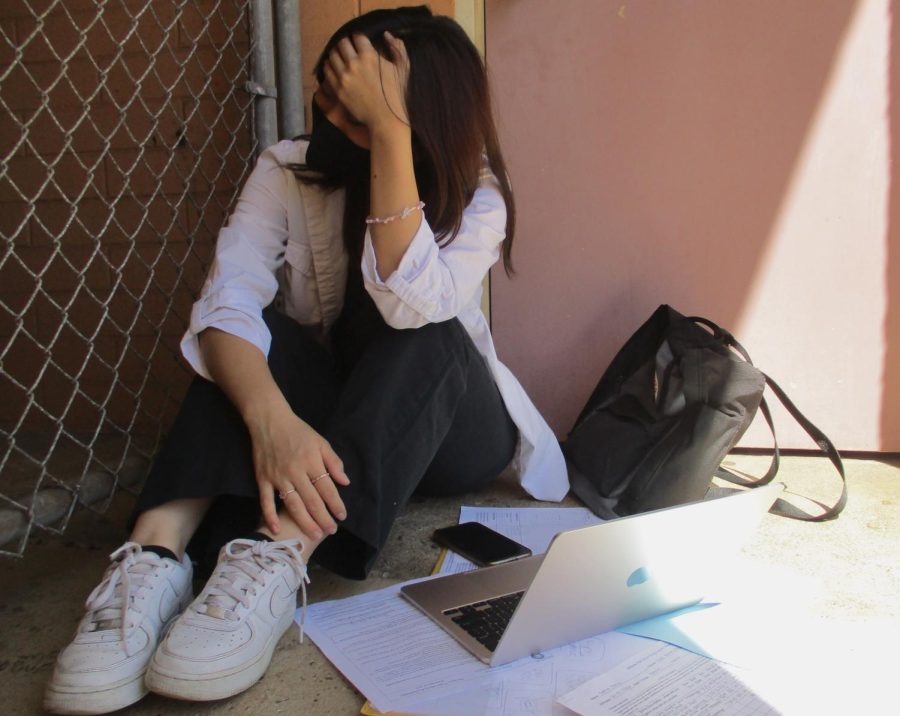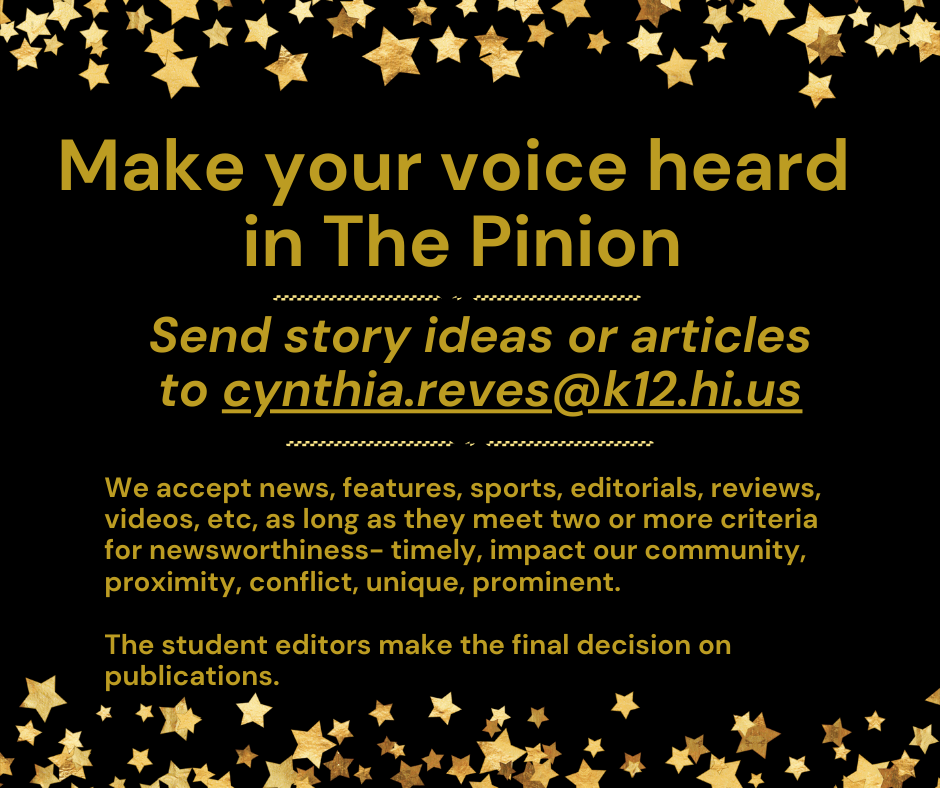Students Face Burnout Epidemic
The modern realities of teenage burnout
Burnout is a common issue in high schools and it’s important others are aware they are not alone, whether facing it themselves or helping another student.. Staged photo taken by Jade Bluestone of Sophia Dang
October 20, 2022
In honor of Depression and Mental Health Screening Month in October, it’s time to spread awareness about the realities of teenage burnout. Recently established studies, as well as my conducted McKinley High School student survey, examine the unsettling truth that teenagers who struggle with higher stress levels can lead to teenage burnout and emotional exhaustion.
Defined in Webster’s Medical Dictionary, burnout is “exhaustion of physical or emotional strength or motivation usually as a result of prolonged stress or frustration.” Burnout often occurs when one faces emotional reactions caused by ongoing stress and is often related to school among teenagers. The majority of teenagers who experience burnout either suffer from or will later develop a series of negative emotions and forms of mental exhaustion which may include anxiety, depression, detachment, and lack of motivation.
Though burnout can heavily impact teenagers in their personal lives, it often results in reduced ability in school. Whether grades begin to drop, workloads continue to rise, or inability to make connections at school, students often endure difficult mental detachment as a result. The National Library of Medicine reported in 2020 that some cases of burnout can become so consequential that it can lead to lower academic engagement, higher student dropout rates and negative coping mechanisms.
In my experience, whether with myself, friends and proven by other students in the McKinley survey, burnout typically starts when one begins to talk less in conversations, hesitates to make plans, and participates less in things they used to enjoy. Other times, their work may begin to build up, to a point where they find themselves unable to see past it and let their emails and assignments collect. It sometimes gets worse when they stop coming to school altogether, as they may feel there’s no point in trying.
As reported by Honolulu Civil Beat, a national analysis of “people seeking help with their mental health” conducted in June of 2020, revealed Hawaii had the highest number of survey participants. Of those participants, 40% were aged 11-17. Another 2021 article by Honolulu Civil Beat revealed that with the events of 2021, teenagers have been facing fewer highs and very low downs. The article reported, “Mental health experts in the state warn of burnout and anxiety.”
In October 2022, I conducted a survey and 150 high school students responded in the first 24 hours of releasing the survey. Ranging from freshmen, sophomores, juniors and seniors, I asked a series of seven questions. In an attempt to better understand how teenage stress and burnout affect students at McKinley, I took a small portion of the 1,500 students to spread awareness about mental health issues.
With the definition I provided being, “Teenage burnout occurs when students face emotional or physical reactions caused by ongoing stress,” 71% of students reported having experienced teenage burnout at least once in their life with 57.3% of those students experiencing it more than that. The leading cause of stress in students reported school as their main stressor.
I then asked what affected students the most and the top three results reported that 32% were left unmotivated, 18% were led to a depressive state and 9.3% were unable to care for themselves during that time. The highest level of stress on a 1-5 scale was a four, reporting 31.3% and only 6.7% were recorded as not having any.
The survey reported a common connection with heavily affecting individuals emotionally and their academic performance. The main management of stress was to ignore it with 34% and 22% choosing isolation.
Lastly, I included a short response section for students to anonymously share their advice, thoughts and experiences. Here were a few,
- “It’s okay to be selfish.”
- Don’t do anything rash when you’re in a bad head space.”
- “It’s okay to not be okay, but it’s never okay to suffer in silence.”
- “It gets to the point where my life is just work and nothing else.”
- “Most teens can’t ask for help and those who do are usually ignored.”
- “Stressing out affects everything in my everyday life such as school, friends and extracurricular activities.”
- “Burning out is like a candle. You start off filled with wax, but you get lit, and lit, and lit, until the wax lowers more and more. Eventually, there is no wax. You can’t get it lit anymore, there isn’t anything to light.”
Some students shared their experiences with mental health and brought attention to the overwhelming impact that stress holds in their lives. Whether it’s academics, work, relationships or anything else, each and every reason is justifiable.
Burnout is a common issue in high schools and its important others are aware they are not alone, whether facing it themselves or helping another student.
Here are a few resources if you find yourself struggling with burnout or student stress.






